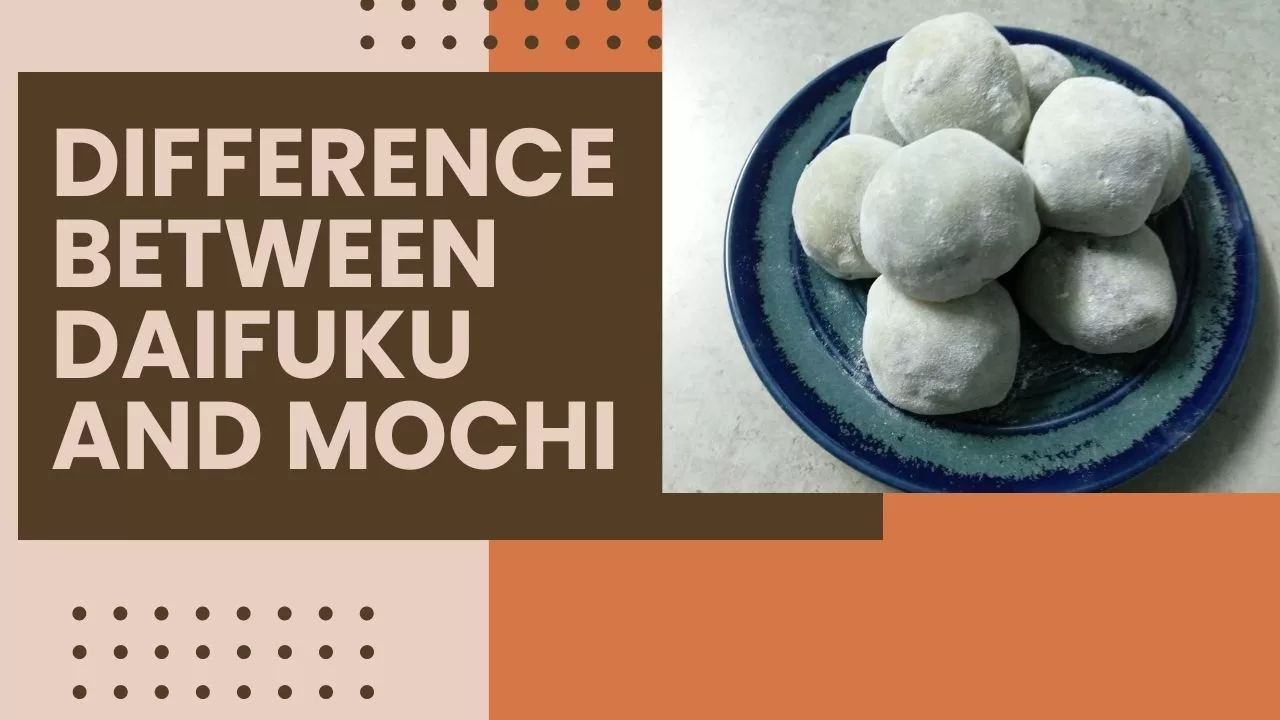Craving for Japanese treats, such as Daifuku and Mochi? Do you want to know what makes the two different? You’ve come to the right place.
We’ll discuss the distinctions between the traditional Japanese confections, Daifuku and mochi, in this article. Continue reading if you’re curious in the differences between these two Japanese treats.
Daifuku vs Mochi
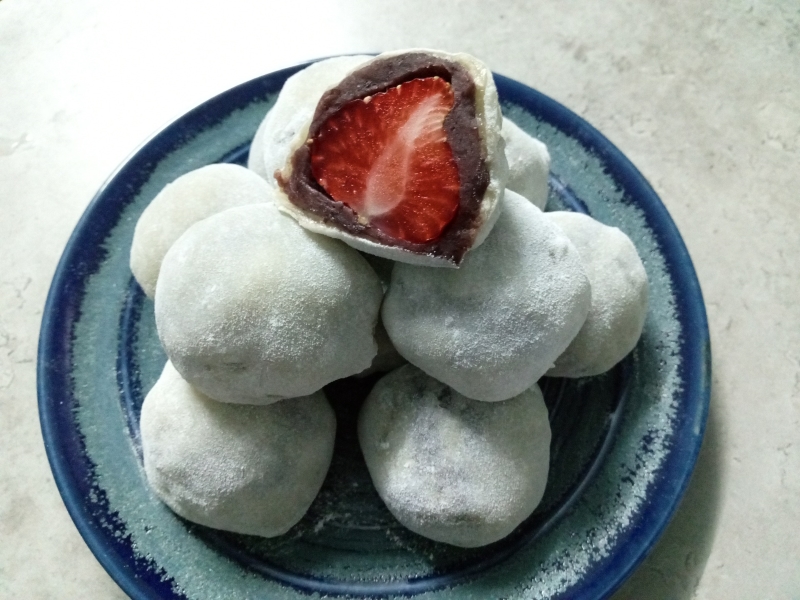
Daifuku
Japanese sweets, such as daifuku, also called daifuku mochi, are prepared with sweetened red bean paste (which is produced from azuki beans) and thin rice cake. In Japanese, daifuku is frequently referred to as daifuku mochi. Daifuku’s skin is frequently referred to as mochi because basically it is made from glutinous rice or sticky rice.
Many different types of daifuku are available. The most typical are mochi that are white, light green, or light pink that are filled with anko. Daifuku had a diameter of roughly 4 cm. In order to prevent them from clinging to one another or the fingers, nearly all daifuku are dusted with a thin layer of corn starch, potato starch, or rice flour (rice starch).
Examples of Daifuku include Mame-daifuku, its pea-filled mochi. In Ichigo-daifuku, strawberries are used in place of sweet red bean paste. Kusa-daifuku, a Daifuku whose mugworth-filled mochi. Another variation of daifuku called yukimi-daifuku substitutes ice cream for bean paste.
Generally speaking, Daifuku is a traditional variation of stuffed mochi, and is created with adzuki, a red bean paste, as the filling and sometimes sugar. Although other fillings can also be used, such as black sesame.
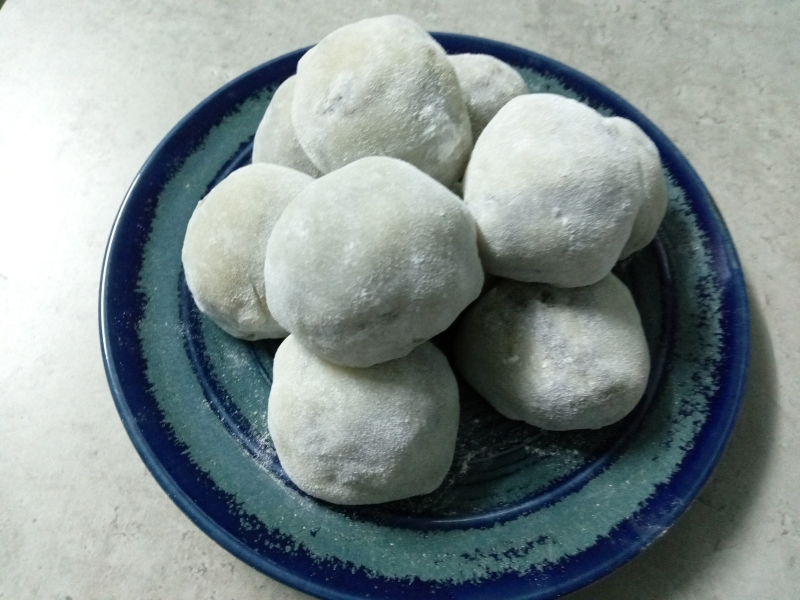
Mochi
Another popular sweet dessert in Japan is Mochi. It is also starting to gain recognition abroad. It comes in a huge range of tastes, hues, and sizes, and is typically enjoyed with a filling in the middle. Mochi is made from rice starch.
Traditional ingredients for this dough-like delicacy known as mochi include rice starch/ glutinous rice flour, sugar, salt, and food colorings. To produce new variants, mochi is made with a variety of fillings and colors.
Mochi is one of the best light snacks or sweets you can consume after a meal and has been connected to many customs and superstitions.
This delicacy can also be put as a topping to a variety of other desserts, including ice cream, cereal, frozen yogurt, and many more.
Mochi is part of the Japanese culture, and is available throughout the year and is often sold in various stores everywhere throughout Japan. Mochi is now available and eaten in other countries, including North America.
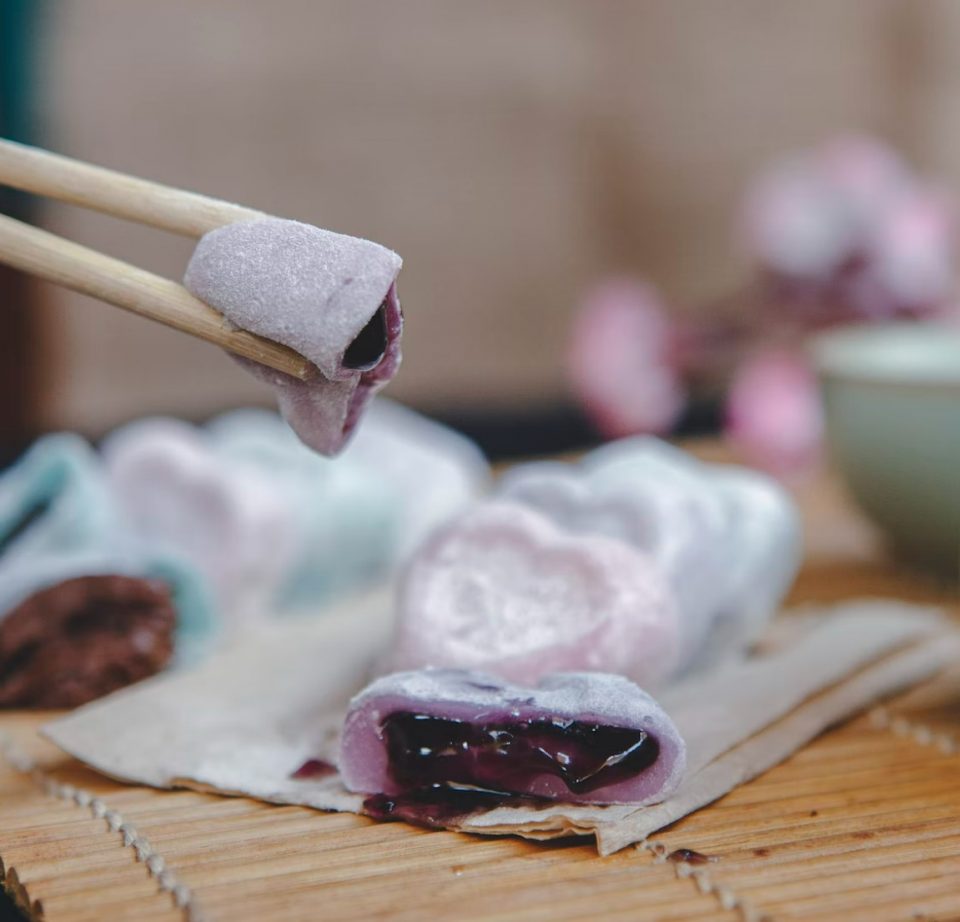
Below Are The Differences Of The Traditional Japanese Sweets, Mochi vs Daifuku
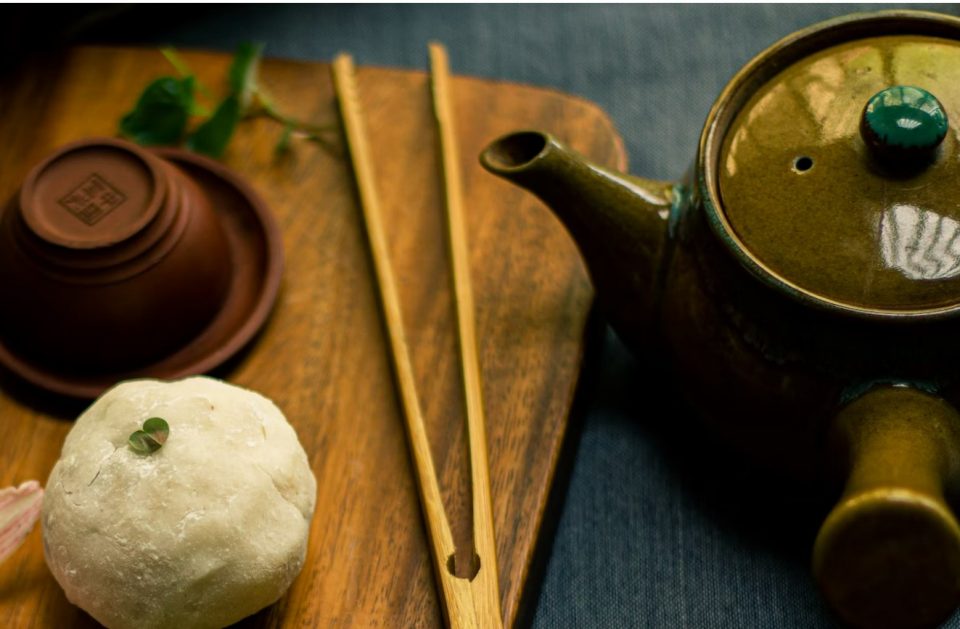
Texture
Mochi
Mochi is typically very soft but chewy. You can compare its texture to an extremely soft gummy bear.
Mochi is easy to bite into and might have a somewhat different texture depending on how it was created.
Due to the physical refining of the rice, which is subject to human error and other imperfections, mochi made using mashed gelatinous rice will be somewhat chewier and will provide a more textured sensation.
The texture of a mochi prepared from rice starch will be very different, on the other hand. A fully homogenized slurry is created using rice starch, and it can be significantly more delicate than a slurry that has been manually prepared.
However, since the difference is so subtle, you may get away with using either technique. A lot of people prefer the traditional texture of mochi, which is produced using mashed rice.
Generally speaking, mochi has a gummy bear-like texture, which is chewy and tender.
Daifuku Mochi
Daifuku offers textures in different layers. The mochi itself has a distinct texture, which is then followed by the mochi’s filling.
The intriguing thing about red bean paste is that both of these textures blend so nicely that you won’t even detect the delicate textures of the individual ingredients.
The red bean paste itself can be modified to suit tastes. Depending on the manufacturer, the red bean paste can have a fine texture or a coarse texture. While some individuals prefer a smooth red bean paste, others could crush the beans or leave big chunks of them in the finished product.
So when eating daifuku, you might feel a variety of textures according to its contents.
Basically, daifuku mochi is multi-textured. It has a soft, chewy, grainy, as well as tender texture with a red bean paste filling.
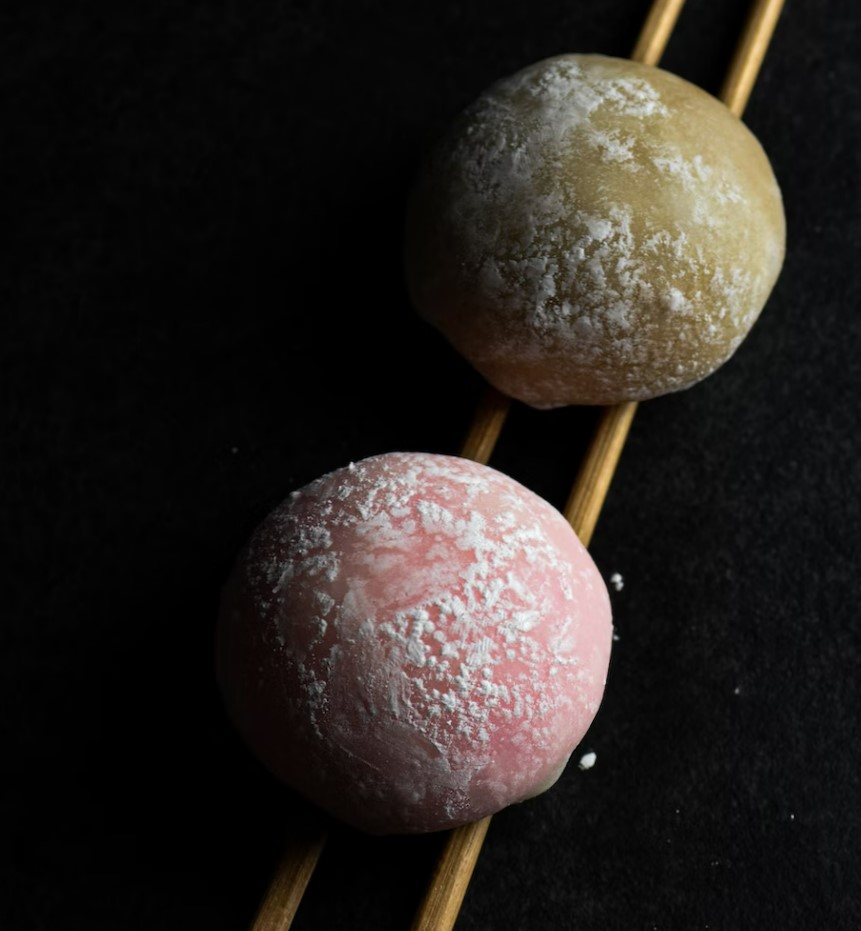
Flavor
Mochi
A classic, sweet snack is mochi. It offers a delicate flavor with hints of sweetness. The mochi’s gelatinous rice contributes to the dish’s sweet and starchy flavor.
Mochi comes in tens of thousands of different varieties. Other people add color to the mixture, which brightens it up but doesn’t affect the flavor.
Although most people choose to consume mochi as a dessert, you can also add meat-based fillings to it. Mochi may be matched with a variety of things. Even though it’s uncommon, it says a lot about the adaptability and variety of this delicious dessert.
Daifuku Mochi
Daifuku’s flavor can vary in a wide range of ways and will always be changing.
Traditionally, Daifuku mochi is typically either sweet or savory with traces of sweetness. Take note that the inside red bean filling can be either served sweetened or unsweetened. If you try the sweetened variety, this Japanese dessert will have a flavor that is primarily sweet; whereas, an unsweetened daifuku will have a flavor that is mostly savory with a hint of sugar.
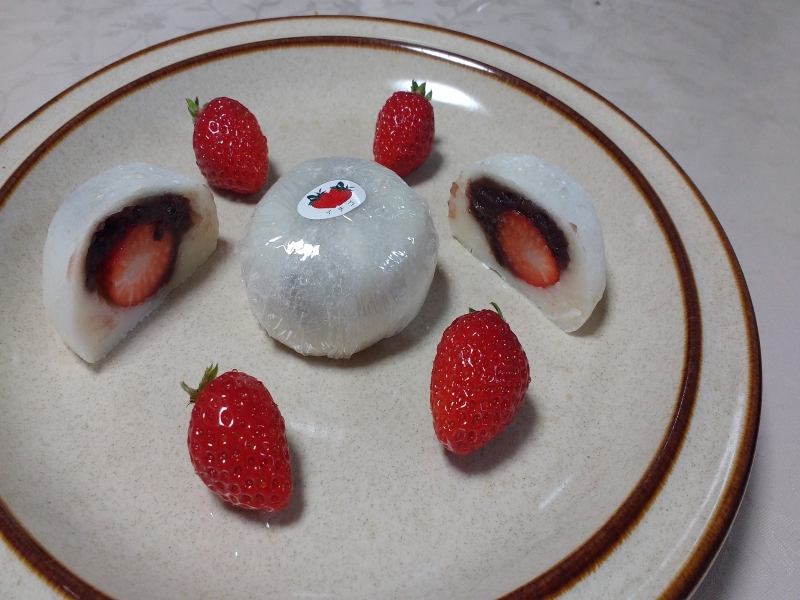
Varieties
Mochi
Mochi stuffed with a variety of fillings and colors are delicious. It can be combined with many different sweeteners.
Mochi Ice Cream is a popular variant. Mochi ice cream is created by encasing tiny balls of ice cream in mochi. Small, round mochi ice cream is a soft, pounded sticky rice dumpling, wrapped around an ice cream filling. The ice cream gives the treat flavor and smoothness, and the mochi gives it sweetness and texture. Vanilla, chocolate, and strawberry are the classic ice cream flavors. A lot of people also prefer other flavors including red bean, plum wine, green tea, and Kona coffee. Additionally, mochi can be flavored to go well with the ice cream filling. To prevent caking while being created and handled, mochi is coated with either cornstarch or potato starch when it is made.
Daifuku
Mostly composed of sweetened or unsweetened red bean paste. different fillings may also be used to make it.
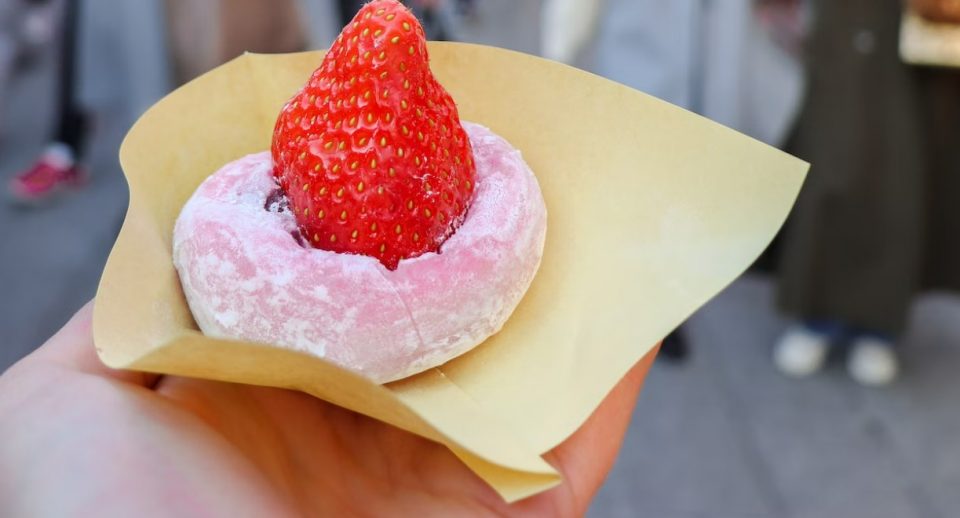
Bake or Eat Raw
Mochi
Freshly prepared mochi can be eaten raw. But because mochi becomes harder with time, it is best to bake it if in case it comes to that situation.
Also, if you want to consume one that has been frozen, you must bake it first.
Daifuku
It can also be eaten raw. It is typical to consume freshly prepared one the same day.
Cooking Method
Mochi
Mochi is prepared using rice powder or mashed rice. These Japanese sweets are steamed.
Daifuku
This Japanese delicacy is prepared using rice powder or mashed rice. It is also steamed.

How To Make Mochi
Ingredients
- 1/2 cup of rice flour or potato starch
- 3/4 cup of glutinous rice flour
- 1/4 cup of sugar
- 3/4 cup of water
Instructions:
- Combine the sugar and rice flour in a bowl. Carefully whisk, then gradually add the specified amount of water while combining.
- Add the remaining water little by little until the mixture is homogeneous and clear. The rice slurry shouldn’t contain any lumps at all. If you do observe lumps, use the whisk to break them up.
- Next, in a large steamer pot, boil water and let it steam.
- Then, Place the combined rice and sugar in a heat-resistant bowl. Then, gently put the bowl inside the steamer. Although you can also line the bottom of the steamer with parchment paper and then pour the slurry over it, the bowl method is cleaner and more practical.
- After around 7 minutes of steaming the slurry with the lid on, remove the lid and stir the slurry with a spatula. After mixing it for one to two minutes, steam it for an additional seven minutes with the lid on.
- Now, take the hot bowl with caution, then set it aside. And that’s it. You have successfully made a delicious mochi.
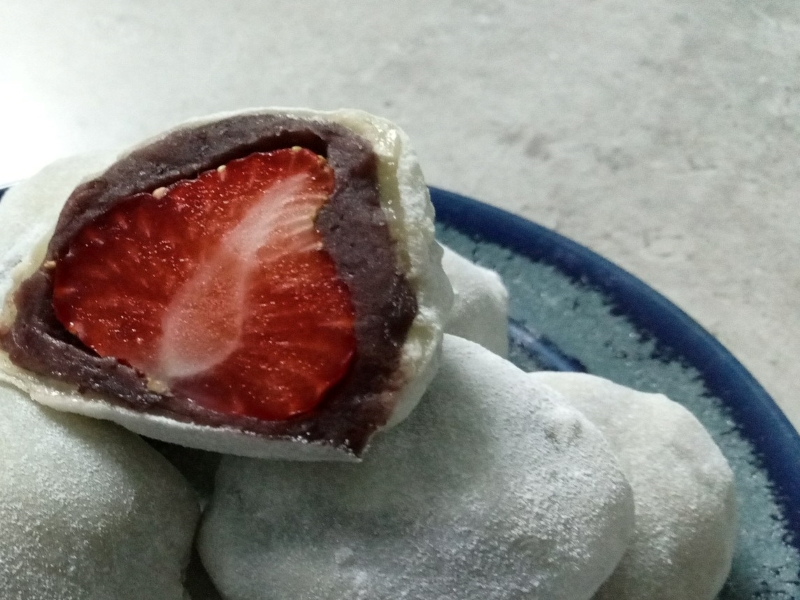
How To Make Daifuku
Ingredients
- 1/2 cup rice flour or potato starch
- 3/4 cup of glutinous rice flour
- 1 1/2 cup of red bean paste
- 1/4 cup of sugar
- 3/4 cup of water
Instructions:
1. Dust your work surface thoroughly with rice flour.
2. On the work area, spread the mochi out and sprinkle it with more rice flour.
3. Next, the mochi should be thinned with a rolling pin. Making daifuku doesn’t require making it paper thin; a medium thickness, between one and two inches should be sufficient.
4. To create circles from the flattened mochi, you can utilize a round cookie cutter or any other round form.
5. Next, each circle should be carefully picked up, and you should use a little cooking brush to remove any extra starch. Using this technique, we shall make one mochi at a time.
6. Then, Adzuki should be placed in the center of the mochi circle, one spoonful at a time. You can buy pre-made red bean paste through online stores if you don’t have the time to prepare it at home.
7. The mochi should now be pushed together at each corner. Start by pinching the circle’s top and bottom, then move on to the left and right. The mochi will resemble a dumpling by this point.
8. Pinch the remaining mochi edges together to completely envelop the filling. Be aware of the filling’s volume. If you use too much, you risk tearing the mochi, and using too little will result in an unappetizing daifuku.
9. Then, sprinkle a tiny quantity of potato or rice starch over the sealed part.
10. To present the daifuku that has been created, place it in a paper cupcake mold. Repeat these steps with the remaining mochi circles.

Another Cooking Method
Mochi and Daifuku can be cooked using a variety of other techniques. The most well-liked and practical choice is to microwave the rice slurry mixture till mochi is formed.
Daifuku may be made using microwaved mochi, and the nice thing about it is that if done correctly, there is no textural difference between microwave method and steamed method.
For those who don’t want to deal with double boilers or who don’t have a steamer at home, this is ideal option.
Here’s how it’s done. Using the same procedures as previously, create the slurry to begin producing mochi in the microwave. Now, transfer the prepared slurry’s contents into a microwave-safe bowl and loosely cover it with a lid rather than steaming it.
The mixture should be microwaved for a minute on the highest setting. Carefully remove the bowl and stir the slurry with a wet spatula.
In the microwave, re-heat the mixture for an additional minute. Get the bowl out, stir the contents with a moist spatula, and then heat it for another minute. And that’s it. You’ve just succeeded in making mochi.

Frequently Asked Questions
Mochi is a diverse, nutritious snack that is a staple of the Japanese diet. Since its introduction, it has been particularly well-liked by Samurai for its practicality and by rice farmers to boost their endurance. The fact that Mochi is convenient, highly filling, and only requires a tiny amount the size of a matchbox to replace an entire bowl of rice is its most major advantage.
Daifuku and mochi are both typically prepared from rice flour or mashed rice, making them both gluten-free desserts. The numerous varieties that are available for each item, however, should be eaten cautiously.
Daifuku is typically served with a cup of revitalizing green tea and is consumed as a dessert or a quick snack. All around Japan, various daifuku variations are widely obtainable in grocery stores, convenience stores, restaurants, and dessert shops.

